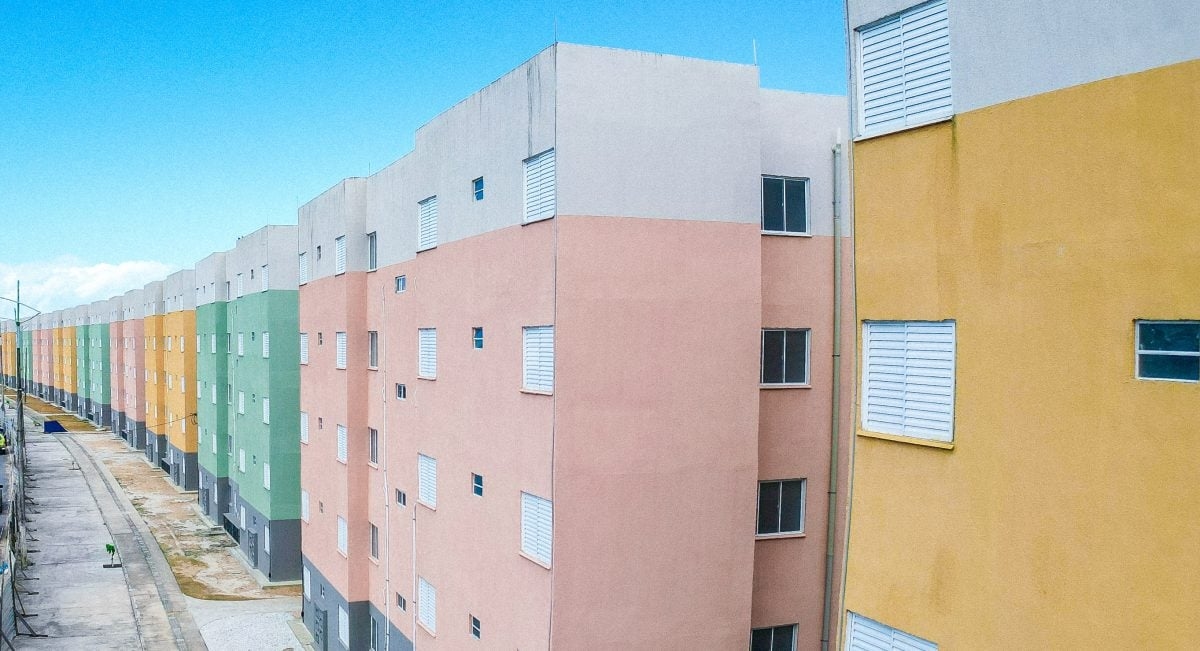Caixa begins offering housing loans with new rules

Starting this Monday the 13th, homeownership is more affordable. New rules from Caixa Econômica Federal came into effect to expand access to housing finance.
The measures should inject R$20 billion into real estate credit and, according to the bank, finance 80,000 new properties by the end of next year.
The package supported by the federal government includes increasing the maximum financing quota to 80% of the property value and raising the ceiling for properties financed by the Housing Finance System (SFH) from R$1.5 million to R$2.25 million.
The changes especially benefit families with a monthly income above R$12,000, a group that previously had difficulty accessing housing credit outside of market rates.
Reducing the down payment unlocks access to credit for thousands of families who were close to obtaining financing but were unable to raise enough initial capital.
Responsible for approximately 70% of the country's housing financing, Caixa will be the main institution to operate the new model, which will remain in the testing phase until the end of 2026.
If the format proves effective in expanding the supply of real estate credit and reducing costs, full operation is expected in 2027.
What changes in practice?Before the new rules, maximum financing was limited to 70% of the property value. With the return of the 80% quota, the buyer must have a smaller down payment.
Example for a property worth R$500,000:
- Old rule (70%): down payment of R$150,000
- New rule (80%): down payment of R$100,000
What changes for those who use their FGTS balance?
The Housing Finance System (SFH), created to offer special conditions and lower interest rates, also underwent an update.
The new ceiling of R$2.25 million expands the scope of the rules that allow the use of the FGTS balance as part of the financing.
Now, higher-value properties can be purchased with regulated interest rates and benefits previously restricted to lower price ranges.
How to use FGTS in housing financing:
- as a down payment, reducing the amount to be financed;
- to pay off the outstanding balance, reducing installments or terms;
- to pay part of the installments, easing the monthly budget.
Can FGTS be used to finance any property?
- Yes, as long as the property value does not exceed R$2.25 million and the financing is within the SFH.
Who can benefit?
- The new conditions were designed for middle-class families with monthly incomes above R$12,000. Buyers with incomes below this amount continue to be eligible for the Minha Casa, Minha Vida program, which provides affordable housing.
Do the rules apply to new and used properties?
- Yes. The conditions apply to both new and used properties, as long as the value is within the SFH limits.
Do I need to be a Caixa customer to finance?
- No. Anyone who meets the income, payment capacity, and documentation requirements can apply for financing.
How do I know how much I can finance?
Caixa offers a simulator on its website that estimates the value of the credit and installments based on family income and the buyer's profile.
What steps should I take to apply for housing finance?
- Gather documents: proof of income, identity and income tax return.
- Run an online simulation on the Caixa website.
- Look for an agency with the data in hand to negotiate financing.
What changes in the use of savings resources?
Current rules:
- 65% of the resources deposited in savings are mandatorily allocated to housing credit;
- 20% is retained by the Central Bank, as a compulsory deposit;
- 15% remains free for other bank operations.
Transition period, from 2025 to January 2027:
- The compulsory deposit percentage will fall from 20% to 15%. The 5 percentage point difference will be applied to the new model.
After the transition period, starting in January 2027:
- End of the obligation for banks to allocate 65% of savings deposits to housing loans;
- Compulsory deposits at the Central Bank will be eliminated;
- Up to 100% of the money invested in savings can be used for housing loans.

Subscribe to our newsletter and receive an exclusive morning bulletin
After difficult years , we've returned to a Brazil that feels at least a little bit normal. This new normal, however, remains fraught with uncertainty . The Bolsonaro threat persists, and the appetites of the market and Congress continue to pressure the government. Abroad, the global rise of the far right and the brutality in Gaza and Ukraine risk imploding the fragile foundations of global governance.
CartaCapital doesn't receive support from banks or foundations. It survives solely on advertising and project sales, and contributions from its readers . And your support, our readers, is increasingly crucial .
Don't let Carta stop. If you value good journalism, help us keep fighting. Subscribe to the weekly edition of the magazine or contribute whatever you can.
Subscribe to our newsletter and receive an exclusive morning bulletin
CartaCapital





